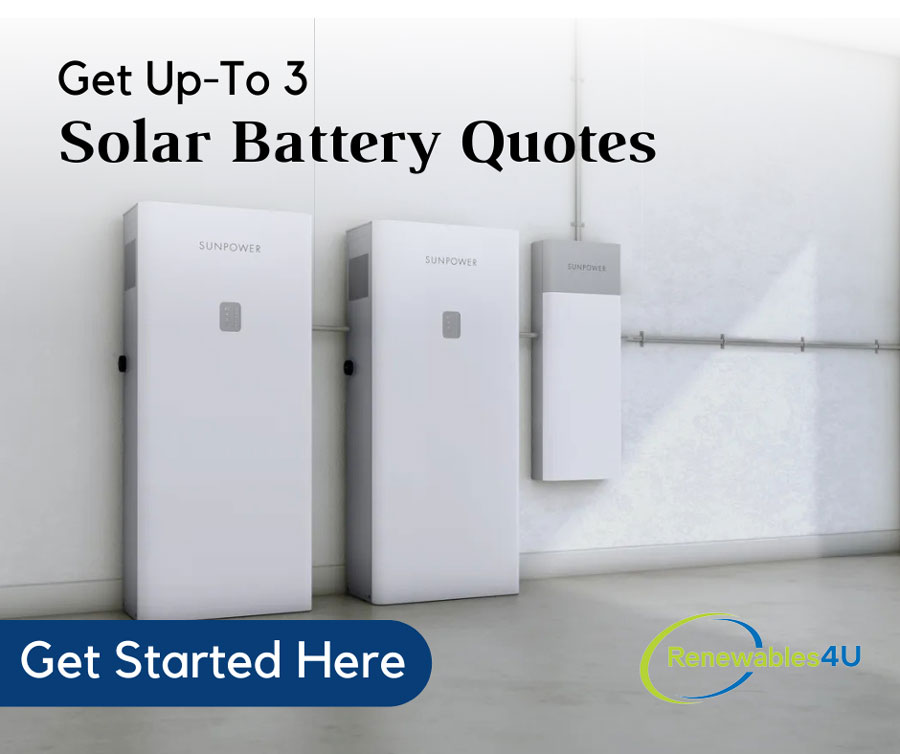There are four main solar battery types: Lead Acid, Lithium-ion, Flow, and Sodium Nickel Chloride. Each type has its distinct features and benefits.
They are essential for various solar energy storage applications. Let’s discuss each type.
1. Lead Acid
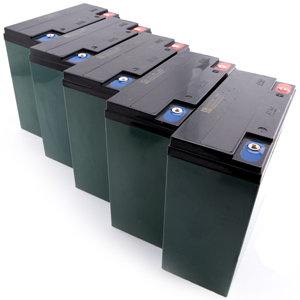
Lead acid battery functions through a chemical reaction between lead and lead oxide. It’s rechargeable and effective for storing and releasing electrical energy.
It has been widely used in various applications, including off-grid and hybrid solar solutions. Its popularity stems from several benefits.
- Relatively Inexpensive — Accessible and affordable for many users.
- High Energy Density — Capable of storing substantial energy.
- Large Power Output for Short Periods — Ideal for delivering large amounts of power over short durations.
- Durability — Strong and able to withstand diverse environmental conditions.
- Versatile — Practical for use in a range of different environments.
Despite their advantages, lead-acid batteries do not look very attractive. They are bulky and heavy. Which sometimes can pose challenges in certain installations.
However, their durability is a significant plus. Lead acid batteries can endure diverse environmental conditions, enhancing their practicality in various settings.
Learn more about lead acid batteries
2. Lithium-Ion
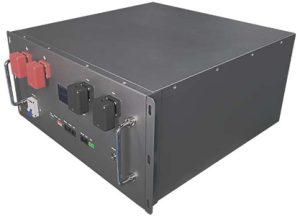
Li-ion batteries have revolutionised the world of portable electronics and are increasingly being used in various industries, particularly in the EV industry and solar battery storage.
- High Energy Density — Stores more energy in a smaller and lighter package.
- Long Life Cycle — They can undergo numerous charge and discharge cycles before the performance begins to degrade.
- Relatively Lightweight — Lighter in weight compared to other solar battery types with similar capacity.
At the heart of the battery, there are two key components known as electrodes, positive and negative. These are separated by an electrolyte, which allows the flow of lithium ions between the electrodes.
The positive electrode (cathode) is commonly made of lithium-ion compounds. These compounds often include materials like Lithium-ion phosphate or lithium-ion cobalt. The negative electrode (anode) is typically made from carbon.
During charging, lithium ions are extracted from the cathode and move to the anode, where they are stored. This process is reversed during discharge. As the lithium ions move back to the cathode, they release electrical energy in the process. The movement is facilitated by a conductive medium, usually a lithium salt dissolved in an organic solvent.
Lithium-ion batteries have a higher energy efficiency compared to lead-acid, meaning they can convert and store energy more effectively. It’s making them well suited for the grid-tied solar systems, where maximising energy efficiency is crucial.
Learn more about lithium-ion batteries
3. Flow
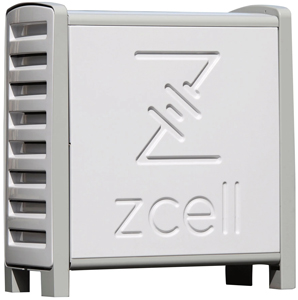
There are not many manufacturers of these around and are a relatively new player within the battery storage marketplace, even though their tech has been around for quite some time.
They are a type of rechargeable solar battery that stores energy in liquid electrolytes stored in external tanks. Unlike traditional batteries, flow batteries separate the energy stored capacity from the power output, allowing for scalable and flexible energy storage solutions.
During charging, the electrolytes flow through a cell stack where the electrochemical reaction occurs, storing energy. During discharge, the electrolytes flow back through the cell stack, releasing stored energy.
Flow batteries are gaining popularity for large-scale energy storage applications. They have some notable advantages:
- Extended Storage Duration — Capable of storing energy for longer periods.
- High Efficiency — Effective in converting and storing energy.
- Virtually Unlimited Capacity — Can be scaled to very large storage capacities.
- Long Life Cycle — Durable over many years with consistent performance.
- Adaptability — Excellently adjusts to the varying solar energy generation.
In Australia, Redflow stands out as a notable manufacturer of flow batteries. Their product is a bromine-based flow battery. It’s recognized as one of the world’s safest, scalable, and most sustainable energy storage solutions.
Recently, they were awarded funding from the U.S. Department of Energy (DOE) for a 34.4 MWh long-duration energy storage microgrid project.
Learn more about flow batteries
4. Sodium Nickel Chloride
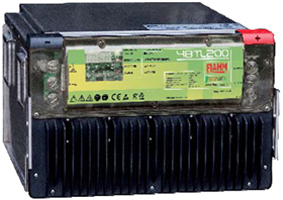
Also known as Na-NiCl2 batteries or SoNick batteries, these are a type of rechargeable battery that uses sodium and nickel chloride as active materials. What is really nice about these batteries is that they don’t have toxic materials and no rare earths are used within them. They will not explode or catch fire.
These batteries work by utilising a ceramic electrolyte that operates at high temperatures. During charging, sodium ions migrate from the positive electrode (nickel chloride) to the negative electrode (sodium), storing energy. During discharge, the process is reversed, with sodium ions moving back to the positive cathode, releasing stored energy.
Sodium nickel batteries have the advantage of high energy density, long life cycle, and improved safety compared to other battery technologies.
In the solar industry, they are gaining attention for large-scale energy storage applications due to their storage ability. They can store excess solar energy longer and at high capacity. Other advantages they have are:
- High Energy Density — Capable of storing a large amount of energy in a compact space.
- Long Life Cycle — Durable over many charge and discharge cycles.
- Improved Safety — Offers greater safety compared to other battery technologies.
- Long-Duration Storage — Ideal for storing energy over extended periods.
- High-Capacity Storage — Can hold a significant amount of energy.
In Australia, Gridedge imports odium nickel batteries manufactured by FZSoNick, who are recognized as market leaders in SoNick battery technology.
Learn more about sodium nickel chloride batteries
Exploring various solar battery types reveals a diverse and advancing field. While each type offers distinct benefits, the quest for more efficient and effective solar energy storage continues.
Reviewed by

Tom Ransome
Co-Founder of Renewables4U and renewable energy advocate. He has experience and extensive knowledge in the field, including a groundbreaking academic thesis and a significant role in Australia's solar industry since 2016. With a BA in Business Studies, focusing on finance and management, Tom merges business acumen with technical expertise to deliver economically and eco-friendly projects.

